- Azure Yacht Design and Naval Architecture
- Inspiration

Azure Yacht Design and Naval Architecture has 1 Photos
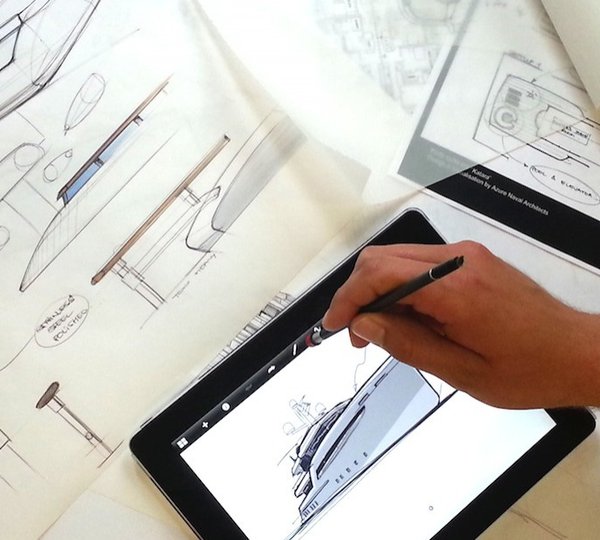
Featured Yachts
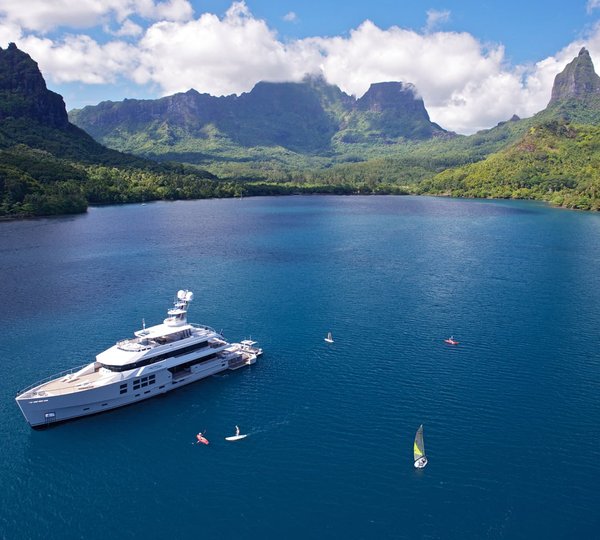
BIG FISH | From US$ 245,000/wk
New launch yachts.
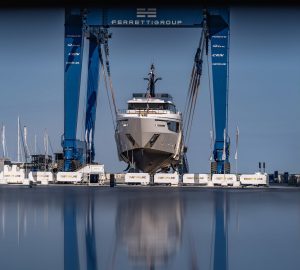
Ferretti Group’s Custom Line Division ...
Azure naval architects news.
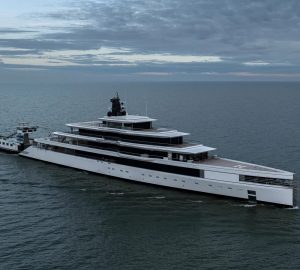
103m Feadship superyacht ULYSSES ...
- Yacht builders & designers >
- Luxury yacht designers >
Azure Yacht Design and Naval Architecture is a respected Dutch studio offering an extensive range of services to clients interested in purchasing and building superyachts for private use or luxury yacht charter. Azure's vast experience includes: luxury superyacht design, engineering & naval architecture, construction supervision, yacht management and support of new build yachts as well as yachts undergoing a refit. Thanks to its philosophy of working in small, dedicated teams and the fact that all specialists are in-house, Azure Yacht Design and Naval Architecture handles its projects in an exceptionally efficient way.For more information and a possibility to charter a yacht designed by Azure Yacht Design & Naval Architecture, please contact us here .
A team of twenty-three skilful yacht designers, naval architects and engineers, many of whom obtained valuable professional experience working for companies across the world, offer innovative solutions, while keeping a close eye on reliability and the quality that Azure is globally renowned for. In addition to the expertise of its personnel, clients will also benefit from their contagious enthusiasm. The company is owned and run by Hugo van Wieringen, Erik Spek and Onne Logger, who have comprehensive experience in yacht building.
Developments
In order to provide the best solutions and services, Azure Yacht Design and Naval Architecture continuously monitors its client's requirements combined with understanding of the yacht market. Due to the fact that the Owners and guests prefer luxury yachts that allow them to have a close contact with the surrounding environment, Azure has come up with a solution that offers its clients superyachts with more open space, more outdoor areas and a greater use of glass to ensure more light and better views.
Thanks to a year-long research program, which involved testing prototypes, Azure Naval Architecture and Yacht Design's engineering knowledge has increased and became more refined, providing the yacht design studio with additional confidence and tools to design very large windows and even glass bulwarks. This process has been conducted by working closely with Lloyd's Register and having their approval on these applications. Clients continue to express a lot of interest in the new options that were opened up to them.
As new rules are being developed by Flag States as well as the Classification Societies, mega yacht design studio Azure continues to participate in review committees and actively designs yachts to the latest rules. It has applied the Passenger Yacht Code (PYC) to a number of its designs and the company is constantly at the forefront of these new rules by keeping in close contact with the relevant bodies and surveyors. The numerous contacts and relationships that Azure has developed and continues developing allows it to steadily grow as a successful luxury superyacht design and naval architecture office. Azure's portfolio of clients from around the world makes it a company with a truly global outlook and reach.
Luxury superyachts
Azure Yacht Design & Naval Architecture was responsible for the naval architecture of such important luxury mega yachts as the 88,5m Oceanco NIRVANA superyacht (Project Y707), the 85m mega yacht St Princess Olga (Project Y708) and created naval architecture for 91m Project Y709 and the Project Y710 yacht of 88,5 metres. Another important vessel delivered by the company is the SEVEN SEAS yacht , also constructed by the prestigious Oceanco shipyard .
- Luxury yacht designers
- Adam Lay Studio Yacht Design
- Bernard Olesinski Limited
- Docq Concepts Yacht Design
- Farr Yacht Design
- Francesco Paszkowski Yacht Design
- Nuvolari Lenard Yacht Design
- Philippe Briand Yacht Design
- Setzer Yacht Architects - Yacht Design
- Sterling Scott Yacht Design
Quick Enquiry
Azure yacht design and naval architecture news.
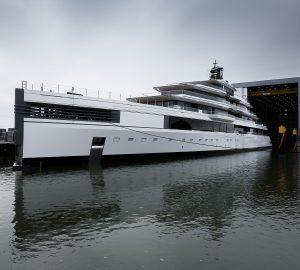
103m superyacht PROJECT 1011 from ...
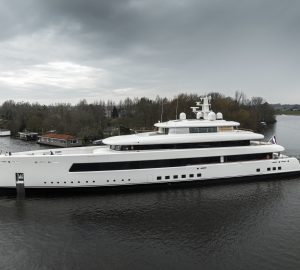
67m Feadship mega yacht PROJECT 823 ...
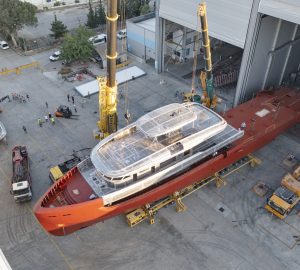
Alia Yachts’ 53-metre full-custom SEA ...

The global authority in superyachting
- NEWSLETTERS
- Yachts Home
- The Superyacht Directory
- Yacht Reports
- Brokerage News
- The largest yachts in the world
- The Register
- Yacht Advice
- Yacht Design
- 12m to 24m yachts
- Monaco Yacht Show
- Builder Directory
- Designer Directory
- Interior Design Directory
- Naval Architect Directory
- Yachts for sale home
- Motor yachts
- Sailing yachts
- Explorer yachts
- Classic yachts
- Sale Broker Directory
- Charter Home
- Yachts for Charter
- Charter Destinations
- Charter Broker Directory
- Destinations Home
- Mediterranean
- South Pacific
- Rest of the World
- Boat Life Home
- Owners' Experiences
- Interiors Suppliers
- Owners' Club
- Captains' Club
- BOAT Showcase
- Boat Presents
- Events Home
- World Superyacht Awards
- Superyacht Design Festival
- Design and Innovation Awards
- Young Designer of the Year Award
- Artistry and Craft Awards
- Explorer Yachts Summit
- Ocean Talks
- The Ocean Awards
- BOAT Connect
- Between the bays
- Golf Invitational
- Boat Pro Home
- Superyacht Insight
- Global Order Book
- Premium Content
- Product Features
- Testimonials
- Pricing Plan
- Tenders & Equipment
Azure Yacht Design and Naval Architecture
Related articles.

Yachts for sale
Yachts for charter.
Yacht Features
Propulsion System
- Ordered by Shipyards & Yacht Brands
- Ordered by Date
- Yacht Designers
- About and Contact
- Yacht Support Vessels
- Tenders & Toys
- Some interesting other sites in the superyacht world
Azure Yacht Design
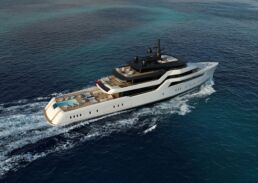
The XP75 is 75 meters long overall and has a beam of over 12 meters. It is the most extended explorer project ever designed by Nauta. Azure delivered the naval architecture with a 200-page…
Feadship Project 1011
Project 1011 has emerged from the construction shed at the Feadship facility in Makkum; the fitting process will continue in preparation for sea trials in the North Sea before delivery.The…
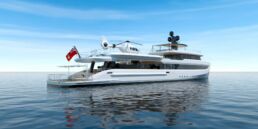
Sea Club 53 // Alia Yachts
The Alia Yachts Sea Club 53 offers a fully certified helideck on just 53 meters and much space for tenders and toys - a luxurious mobile waterpark.Dutch design studio Azure Yacht Design & Naval…
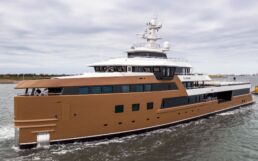
LA DATCHA // 77m Damen SeaXplorer
LA DATCHA is the name of a Damen SeaXplorer motor yacht in a 77m version.Damen Yachting launched the new luxurious expedition yacht LA DATCHA in July 2020 at the facilities in Vlissingen in the south…
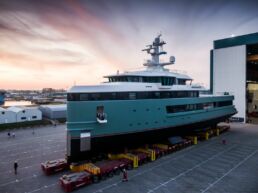
62m Damen SeaXplorer
AMELS' mother company DAMEN launched a 62m vessel of their SeaXplorer line.This 62m unit is the first one of the SeaXplorers. A second yacht – the 77m LA DATCHA will see the light next year.…
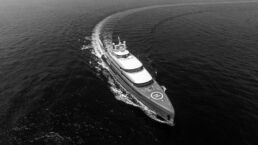
ILLUSION PLUS // Pride Mega Yachts
The Chinese shipyard Pride Mega Yachts presents their 88.5 m six-deck motor yacht ILLUSION PLUS. The yard is looking for a new buyer.Pride Mega Yachts spokesman comments: “The success of such a…
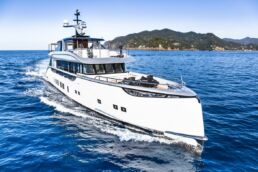
Dynamiq GTT // JETSETTER
A bit over a year ago, Dynamiq Yachts announced a semi-custom superyacht line that is online configurable like a car. Now they present the first finished one: JetsetterJetsetter belongs to the D4…
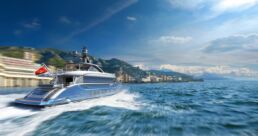
Dynamiq GTT: Configure your Superyacht
Dynamiq GTT is a new semi-custom motor yacht line by Dynamiq Yachts from Monaco with a car-like configurator in sizes of 38.6m (base and sports model) and 40m D4 L(imousine).Update: The first yacht…
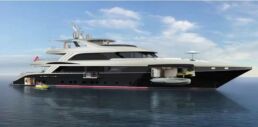
Jongert 500 LE 3D-animation
3D-animation of the Jongert 500 LE Superyacht. This yacht has a telescopic anchor system and a diesel electric propulsion.The Jongert 500 LE was developed in cooperation with Azure Naval Architects…
Using a minimum of third party cookies for YouTube, Vimeo and Analytics.
Privacy Preference Center
Privacy preferences.
Google Analytics

Azure Yacht Design & Naval Architecture
Design Exterior Designers Naval Architects
Netherlands
Design , exterior designers , naval architects, www.azure-na.com.
Azure Naval Architects is an independent Dutch office of naval architects dedicated to provide design, engineering, construction supervision and support for new building or refitting of luxury motor yachts.
- Haarlem Netherlands

| Hugo van Wieringen - director | |
No. of search results: 15
Percent of database: 1%
Average LOAM: 65M
| Name - Current | Yacht Type | Length Overall (m) | Year of Delivery | Builder |
| to see our records. Don't have an account? . | ||||
News summary
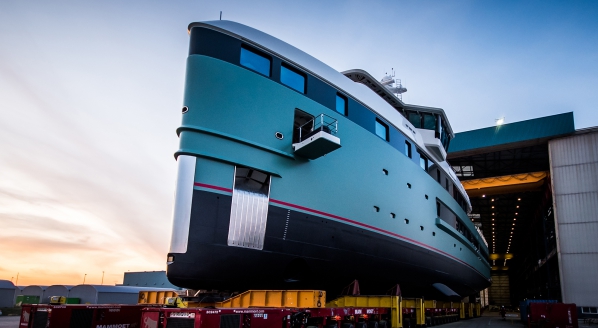
DAMEN launches its first SeaXplorer
The Polar Class luxury expedition yacht is scheduled to be handed to owners in 2020…
.jpg)
Benetti launches ‘FB272’
The Italian shipyard celebrates its second ‘gigayacht’ of this year…
Sign up to the SuperyachtNews Bulletin
Receive unrivalled market intelligence, weekly headlines and the most relevant and insightful journalism directly to your inbox.

The SuperyachtNews App

Follow us on
Media Pack Request
Please select exactly what you would like to receive from us by ticking the boxes below:
Membership Login
To view our digital library and complete intelligence data, please login below Alternatively please join here
SuperyachtNews.com
A Russian billionaire who never even set foot on his stunning 354-foot-long superyacht is now selling it at a $146 million discount. A floating glass palace, the Luminosity boasts 800 square meters of windows, the largest battery pack on a yacht, and a tender that can carry a Rolls Royce Phantom.
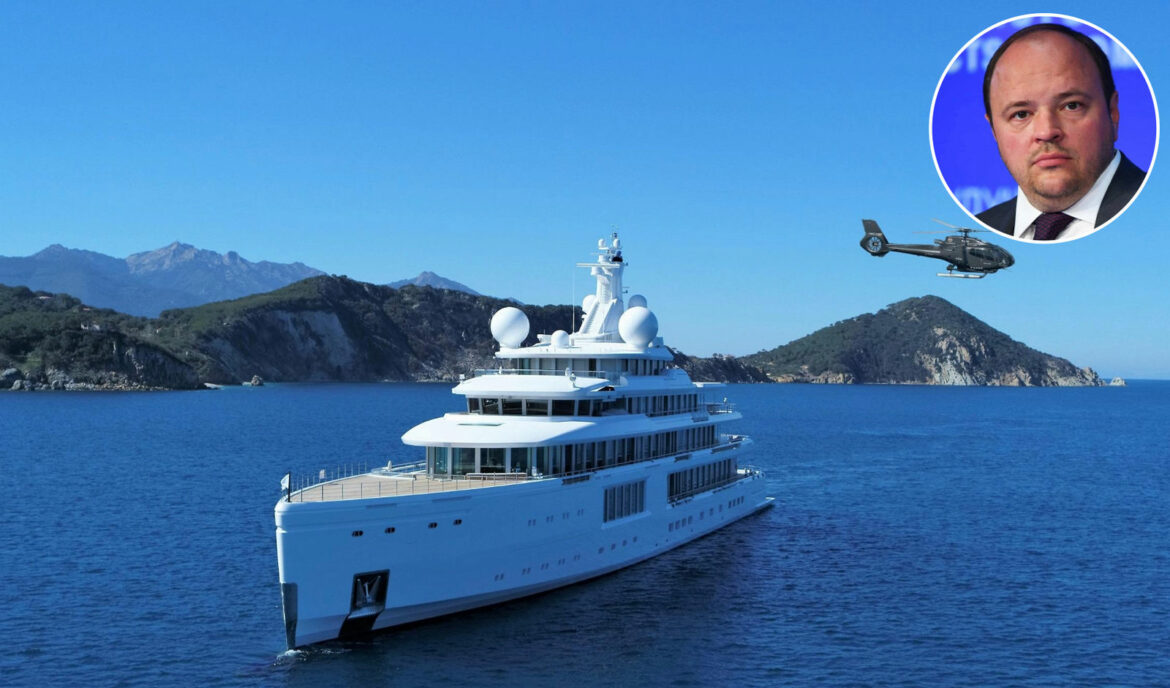
You may also like
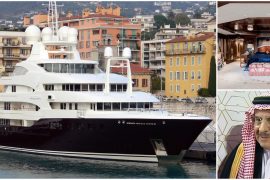
After seizing it last year, Credit Suisse has finally sold Saudi Prince Fahad Bin Sultan’s seized $65 million superyacht
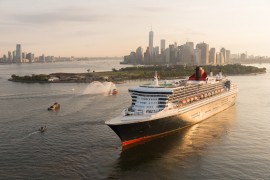
After a $132 million refurbishment Cunard’s Queen Mary 2 cruise ship is more luxurious than ever
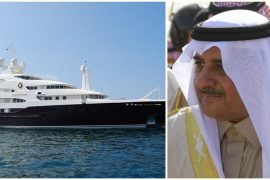
A 270 feet long megayacht of a Saudi Prince is in the midst of a legal battle with Credit Suisse over unpaid $78 million in interest and loans.

A Saudi princess is suing a millionaire lawyer after he spent her money on a lavish $29 million superyacht and sailed around the world in it.
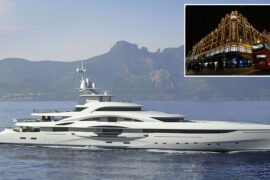
At Harrods, London’s legendary luxury store owned by the Qatari royal family, you could just walk in and get this $165 million superyacht for yourself.
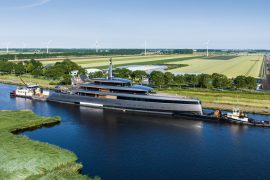
Powered by bio-diesel, the 285 feet long Feadship Obsidian is the greenest superyacht to be delivered this year. The hybrid vessel has fold-out balconies and an underwater viewing lounge.

While Fiji hurriedly seized sanctioned oligarch Suleiman Kerimov’s $325 million Amadea superyacht at the request of the United States. The tiny island nation now wants the 348 feet yacht to leave as they cannot afford its $1 million a week maintenance bill.
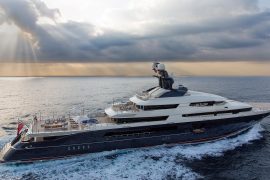
Not from an oligarch, but the first ever superyacht seized by the FBI was this $250 million vessel belonging to a friend of Leonardo Di Caprio – The 300-feet long yacht has gold leaf and marble interiors, a spectacular spa, a movie theater, and a 66-feet long swimming pool.
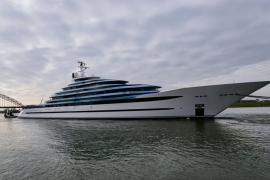
Inside the 100 meter superyacht that comes with a swimming pool aquarium and even a beach club
- Yachts for sale
- Yachts for charter
- Brokerage News
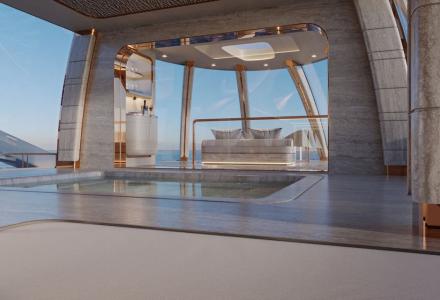
- 114m Project Arwen’s 'Nest' Unveiled by Dörries Yachts
- Yacht Harbour

Latest News
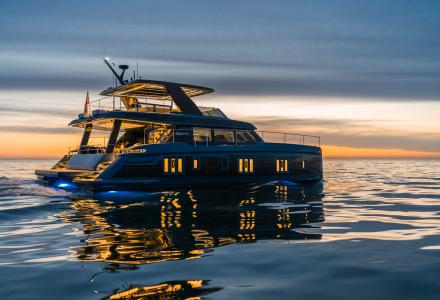
- Sponsored Content
- Editor’s Viewpoint
- From our Correspondents
- Industry News
- Press Releases
- White Papers
- In Depth Analysis
- North Korea
- South Korea
- Afghanistan
- Philippines
- Saudi Arabia
- United Arab Emirates
- New Zealand
- Pacific Islands
- Electronic Warfare
- Land warfare
- Chief-in-Editor Podcast
- Upcoming Events
- Singapore Airshow 2024
- Avalon Air Show 2023
- AeroIndia 2023
- Defense & Security 2023
- DSEI Japan 2023
- Dubai Airshow 2023
- IMDEX ASIA 2023
- Airshow China 2022
- Defense & Security 2022
- DIMDEX 2022
- DX Korea 2022
- Indo Defence 2022
- Indo Pacific 2022
- Land Forces 2022
- Aero India 2021
- DSA Malaysia 2020
- Singapore Airshow 2020
- AeroIndia 2019
- Show Daily – D&S 2019
- Show Daily – D&S 2017
- DSA Malaysia 2018
- Show Daily – IDEAS 2018
- Singapore Airshow – 2018
- Magazine Archives
- Subscribe FAQ
- Testimonials
- Media Kit 2024
- Editorial Calendar 2024
- Advertise with us
- Privacy Policy

- International
- Issue 6 - Nov/Dec 23
- Print Articles
Re-Balancing Design: New Technology and Thinking in Naval Architecture

New technological threats and new operational requirements are emerging in the naval environment, raising the question of how ship and submarine designs should develop in response. For naval architects, this presents new challenges, but also new opportunities.
In December 2022, the UK Royal Navy’s (RN’s) first-in-class anti-submarine warfare (ASW)-focused Type 26 frigate, the future HMS Glasgow , entered the water for the first time. The RN has often stated that Type 26, as an ASW platform, was designed from the keel up using submarine technology to deliver acoustic quieting.
On 1 October 2023, the UK government issued a contract award for the detail design of the new nuclear-powered attack submarine (SSN) that will provide the next-generation submarine capability for the RN and the Royal Australian Navy, under the Australia/UK/US (AUKUS) strategic partnership. SSN-AUKUS, as the SSN project is currently known, will be based around a UK-derived submarine design.

These two examples, amongst others, highlight the core importance of the baseline design in generating naval capability.
In the contemporary naval environment, emerging threats are driving new operational requirements. New technology is emerging too, and is both driving the threat and enabling the operational response.
In parallel, as threats intensify and as Western navies respond, new naval platforms are arriving. These platforms include not only new classes of traditional naval vessels, like aircraft carriers, destroyers, frigates, patrol vessels, auxiliaries, or submarines, but also new types of vessels, like unmanned systems.
As these new threats, requirements, and vessels emerge, technology is also presenting an opportunity to assess how such manned and unmanned platforms are developed, designed, and built.
Within discussions relating to the development of naval threats, requirements, and capability, there is the question of how the technological shift in the naval world is re-shaping the core, baseline skill of ship and submarine design – in other words, naval architecture.
According to the much-referenced naval architecture book ‘Basic Ship Theory’, “Naval architecture is concerned with ship safety, ship performance, and ship geometry, although these are not exclusive divisions.”
“The use of the term ‘architecture’ is no coincidence; like an architect, the naval architect is the person who draws together the engineering strands in the marine world – part engineer, part integrator, part manager, and part artist, bringing these strands together to consider a ship as a whole system,” Andy Kimber, chief naval architect at BMT, a UK-based engineering design house and consultancy that provides naval architecture capability told Asian Military Review (AMR) in an interview at the Defence and Security Equipment International (DSEI) exhibition in London in September.
BMT’s services include concept, design, engineering, operating, and technology expertise for the RN and other navies. As regards surface ships and submarines, the emergence of new technologies and new threats is having some impact on the process and outputs of naval architecture, including prompting new platforms, designs, and capabilities.
Change but no change
However, there are some elements of the naval architecture process that remain the same, regardless of the threat.
“If you start with naval architecture as an engineering discipline, we are ultimately governed by physics and engineering reality,” said Kimber. “Naval architecture – the theory of it – doesn’t change, because it is what it is. Whether it’s below the sea surface or on the sea surface, the physics is there and our understanding of that physics is reasonably constant.”
“At a level that engineers are interested in, our understanding of physics is very mature,” Kimber continued. “So, in that sense, the stability isn’t changing, laws of resistance don’t change, because the laws of physics aren’t changing.”
“What is changing is the tools available to us to model and understand the platform before it’s built,” Kimber explained.
Here, he underscored how new technology, especially information-based technology, is changing how naval architects get the best out of traditional tools such as computer simulation and modelling. “The digitisation of our industry and the tools that are becoming available are allowing us to analyse the same thing in a different way,” said Kimber. The ability to use digital technology and the increased information levels available provide what he termed a ‘new tool set’. This new tool set does not mean that architectural design, modelling, and testing is done faster and more easily; instead, it can be done more extensively and exhaustively, he explained. “We now want to explore more, so instead of doing five options, we want to do 100 …. We’re seeing our ability to model and integrate things in more complexity grow.”
“We now want to explore more, so instead of doing five options, we want to do 100…”
The ability to try things more extensively offers clear benefits in certain areas of the naval architecture process, Jake Rigby, BMT’s head of innovation and research, told AMR during the DSEI interview. “Especially at the concept stage, because the concept stage is not necessarily about … following a straight-line process to get to the end outcome; it’s exploring the requirements, exploring what solutions could be viable,” said Rigby. “Rather than just looking at a small number of hullform iterations, you can now explore a huge variation.”
Architecture oversight
At DSEI, Team Resolute, a UK-based collaboration between Navantia UK, Harland & Wolff, and BMT, unveiled its latest, evolved design for the RN’s Fleet Solid Support (FSS) ship programme, which will deliver three new UK Royal Fleet Auxiliary (RFA) platforms to support RN carrier strike group (CSG) and other operational requirements. Speaking at DSEI, BMT’s FSS chief engineer Simon Jones explained that, while Navantia will lead on the FSS detail design, BMT’s role is to ensure the continuation of the design intent. In other words, BMT will provide a form of naval architectural oversight, to ensure the detail design adheres to the original concept design.
This underlines how the naval architect’s role covers the entire capability development and delivery process, across pre-concept, concept, design, manufacture, and in-service phases.
“At the concept stage, the naval architect is probably having a greater role, because trying to incorporate many different things at that higher level is the core of what a naval architecture job is,” said Rigby. “[However], as you get to detail design, and into construction, you need the consistency [in] integration and bringing it together.”
“In the early stages … you’re looking at the whole ship, you’re looking at the size, you’re looking at big things. At the end of the process, your hullform is fixed etc, but you’re still looking at the stability because the weight’s still changing, you’ve still got to look at the detail of the structure,” Kimber explained. “The role changes … [but] it’s always there.”
“Naval architecture is the glue holding all the different pieces together,” Rigby added.
Modelling the threat
The improvements in modelling enabled by digitisation mean that naval architects can better understand the risk posed by threat technologies, and whether changes in the threat mandate changes in the design.
“Our ability to model those threats and what they do to the ships is much greater now. The systems we have to simulate how a ship reacts to damage from a threat are much more sophisticated,” said Kimber. “That said, I think the historical lesson is ‘don’t design to the thing today’, because tomorrow will be different.
“The threat is always evolving,” he continued. “We always come back to the basics of what the threat is: the threat is explosive, it’s blast, it’s fragmentation, it’s fire, it’s a hole in the ship.
“The threat angle probably has a greater impact on mission system [designs], in terms of protecting, sensing, and defending from that threat, than it necessarily does to me as a naval architect,” Kimber explained. “I view the threat as ‘if it hits my ship, it’s going to put a hole, it’s going to create a fire, it’s going to do one of a number of things that are well understood.”
Where ship design does relate to the threat is reducing detection risk in the first place, Kimber continued. “That’s where technology does change things, in terms of matching your signatures to the current perceptions of the threat and how you defend the ship.”
“So, I don’t think [the threat] changes what we’re doing as naval architects, but the environment we’re in and some of the solutions change, and we’re putting together a slightly different balance,” said Kimber. Here, Rigby explained, the balance relates to three aspects of survivability: susceptibility to detection; vulnerability relating to capacity to survive any damage and operate; and recoverability, in terms of repairing damage to the ship. “It’s the balance between those three features that changes over time,” Rigby continued. For example, naval architects may have focused historically on the vulnerability issue by designing ships with heavy armour; in more modern times, the emphasis has shifted to lighter-weight, stealthy vessels in tandem with emphasis on recoverability. “This balance continues to change,” Rigby added.
Designing in flexibility
Contemporary capability requirements for naval ships and submarines are increasingly focused on flexibility, designing in the capacity to adjust the capabilities onboard as and when requirements change. The Team Resolute FSS design, which is intended to give the RN flexibility to cover the evolving needs of its CSG and other operational capabilities out to beyond 2050, is designed to be adaptable.
From a naval architectural perspective, this raises the question of how best to design in such flexibility and adaptability to ensure capabilities can be adjusted as and when requirements change.
Ships like FSS, or indeed the RN’s two Queen Elizabeth-class aircraft carriers, have significant capacity onboard, through using large spaces, to enable flexibility in capability. From a design perspective, the challenge is not providing such spaces themselves, however. Instead, Kimber highlighted two issues. First, is how to best design the ship’s structure around that space. “You’ve got to get things on and off the ship, which invariably means going through the structure.” Consequently, the design and positioning of equipment handling systems, rather than the spaces themselves, can create design complexity. Second, is the question of how regularly and quickly the navy concerned may wish to move equipment in and out of such spaces. “The real challenge with flexibility is getting the understanding from a customer around what they really mean,” said Kimber. “Do they mean ‘I want to go alongside and exchange a container, and I want to do it in two hours’, do they mean ‘I want to change my ship over the course of a week’, or do they mean ‘at some point in the future I might want to fit a future system’?” “The solutions to those problems are all a little bit different,” he added.

“There’s a difference between modularity and adaptability,” Rigby continued. “Modularity is where you can immediately switch out [equipment] within a day ….Adaptability is where you can change it alongside with some work.”
“People talk about flexible ships being simpler, but from a naval architect’s point of view, they’re a little bit harder because there’s more moving parts to think about, and some of those moving parts are usually not very well defined,” Kimber added.
Designing out the human?
One new capability area that is subject to much naval architecture focus is the concept, design, and development of maritime unmanned systems (MUS). MUS as an emergent capability present both opportunities and challenges from a design perspective, including the absence of human operators onboard.
BMT has developed its Large Unmanned Surface Vessel (LUSV) concept design, which it launched at DSEI. “That’s quite an interesting challenge for us, because we were going through it thinking ‘if you don’t have humans onboard, what spaces do you need and what spaces don’t you need?’ said Rigby. This can have fundamental effects from a naval architectural perspective, he explained. Having no humans onboard means no requirement to give them space and capacity to work and live.

As regards opportunities, Rigby explained, future fuel types could be incorporated if the space and weight requirements are different. The platform also can be designed with bulkheads closer together, which improves survivability. Different options can be considered for the number and arrangement of decks.
“People account for a lot of volume in a ship. A lot of the empty space is for people – not just to sleep, eat, and recreate, but in the machinery rooms for example it’s for people to move around and access things. We can remove that,” said Kimber. “That’s a lot of volume, although interestingly it’s not a lot of weight.”
“So, you end up with a different balance, and that’s what we’re exploring with LUSV,” Kimber continued. “It changes the traditional balance between how you put a ship together, because a lot of the volume you don’t necessarily need, so what do you use it for?”
Answering this question can present design challenges, Kimber explained, “The conceptualised LUSV has dimensions driven by seaworthiness considerations, and the removal of volume associated with people – mostly empty space – presents an opportunity to increase the volume available for, say, propulsion systems.” However, he added, “These are much heavier so the displacement becomes a limiting constraint to how much volume can be re-purposed.”

Architectural intelligence
A second new technological development that is impacting naval architecture processes is artificial intelligence (AI) – especially, currently, machine learning.
As regards current impact, the important point is not whether AI could supplant human naval architects by, for example, generating ship designs more readily; it cannot yet do that. Instead, the impact is found once more in helping the naval architect tackle time-consuming processes.
“AI is such a broad term. I think what we’re talking about here is machine learning as a specific sub-set,” said Kimber. “We can take the processes that are repetitive, where we can gain advantage by looking at lots of evolutions and iterations, and we can teach the machine what’s good and what’s bad.” “It’s very much at that machine learning end of AI, to basically spend less time processing many options in a specific area of the design,” he added.
Here, AI – and particularly machine learning – “is intelligent in the sense of repeatability and being able to use rule sets …. You still need the human intelligence to guide the artificial intelligence to look at the right thing,” said Kimber. “I can use AI to look at the 1,000 options that I can’t look at – but I still need to give it the parameters around the 1,000 options to look at.”
BMT is already looking in detail at AI’s impact on naval architecture, Rigby explained. “We have a research project continuing next year, looking at AI in ship design,” he said. It will focus particularly on understanding what AI means. “The way we’re breaking that down is we’re not expecting to have a large language model or similar in the near future, where we can just type in ‘build us a new fleet support tanker’, and it will create the full design. That’s not going to happen.”
“What we can do is break down the design process and look at individual tasks,” he continued. “There are some tasks that take considerably more time, with maybe repetitive processes, that we could automate or bring in some aspects of AI – depending on the type, whether that’s reinforcement learning or otherwise – and solve that problem, giving the naval architect or the designer more time to focus on making better design decisions.”
Here, Rigby highlighted the example of hullform assessment. “We’re actively developing hullform automated assessments,” he said. “Usually, we do parametric analysis to look at the different hullforms, assess them, and understand that solution space. With machine learning, what we do is set the solution parameters and use machine learning to explore that entire solution space.” This process generates options for the naval architect to assess. “We can then say ‘That’s a really interesting area: we can explore that more later on’,” he explained.
“The key is, this is not a different approach. That’s how we’ve always designed hullforms,” Kimber added. “The difference is the scalability. With the machine learning, we can set the machine up to assess 1,000s upon 1,000s of options, which we’d never be able to do manually …. It’s just the ability to process more information.”
“I’m still interested to understand whether the machine would beat a very experienced and qualified naval architect.” Kimber continued. “I think there’s … still the role for the really experienced naval architect: what AI is doing is replacing people in doing all the turn-handle calculations.”
“The challenge is that, in naval architecture, there’s never an optimised solution. You can never say ‘oh I’ve got a fully optimised hullform’, because it’s a balance, it’s a compromise,” Rigby added. “The human in the loop is providing that assessment of what the better compromise is, and that’s not something – even with machine learning and other tools – that you can [otherwise] really make.”
by Dr. Lee Willett
RELATED ARTICLES MORE FROM AUTHOR
Australia orders more bushmaster pmvs, ussocom pursues new insertion techniques, bae systems awarded $111 million in contracts to bring modernized, secure communications to the republic of korea, highlight of the month, centurion supports united states air force, japan in key new contract, the universal link system: ensuring sovereign data links in the asia..., strengthening asia’s military and defence teams with comint, counter-uas and tactical..., recent articles, japan releases new details on improved type 12 ssm, bae systems awarded $111 million in contracts to bring modernized, secure..., hanwha aerospace confirms romanian k9 buy.

- Advertise with us3
- Yacht Design
- Naval Architecture
- Marine Engineering
Yacht Services

+31 (0)23 548 30 10
[email protected], leidsevaart 22, 2013 ha haarlem, the netherlands, write us a message.
Your Message Please leave this field empty. This form can be submitted up to 2 times.

SUPPORT, SUPERVISION & REPRESENTATION
Azure offers a wide range of yacht services to guide our client throughout the intricate process of building and owning a superyacht. Our team has supported and represented the Owner's interests in various new build and refit projects, for yachts ranging from 15 to over 150 meters. Parallel to our new build services, we offer inspections, consultancy and contra expertise services for owners, lawyers, brokers, representatives and shipyards.
During the build of Flying Dagger, Erik of Azure thoroughly represented my interest by ensuring the highest achievable build quality. --OWNER M/Y Flying Dagger

OUR SERVICES
Bid Packages/ Tender procedures
Condition surveys
Insurance surveys
Refit surveys
Light ship surveys
Inclination tests
Commercial yachts
Private yachts
Passenger yachts
New build projects
Consultancy
Authorizing filing agent
Load line surveys
Tonnage surveys
IAPP / IOPP / ISPP surveys
A successful yacht is the perfect fusion between creative and technical design. To ensure a product of superior quality our design team works closely together with our team of experienced naval architects.
Azure’s engineers define overall ship constructions for shipyards and contractors, integrating all structural elements.
Privacy Overview

IMAGES
VIDEO
COMMENTS
Azure Yacht Design & Naval Architecture. call us. +31 (0)23 548 30 10. Email us. [email protected]. Visit our office. Complete your details below and we'll be in touch soon. contact us. Azure focuses on Yacht Design, Naval Architecture, Marine Engineering, and Support and Supervision for luxury motor yachts.
OUR SERVICES. A successful yacht is the perfect fusion between creative and technical design. To ensure a product of superior quality our design team works closely together with our team of experienced naval architects. NAVAL ARCHITECTURE. Building a yacht is an intricate process. To fulfill our client's dreams we offer a complete range of ...
Azure Yacht Design and Naval Architecture is a respected Dutch studio offering an extensive range of services to clients interested in purchasing and building superyachts for private use or luxury yacht charter. Azure's vast experience includes: luxury superyacht design, engineering & naval architecture, construction supervision, yacht ...
Azure Yacht Design & Naval Architecture, Haarlem, Netherlands. 3,102 likes · 1 talking about this · 6 were here. At Azure Yacht Design & Naval Architecture we offer the entire spectrum of services...
One of Azure's strengths is the early involvement of naval architecture in the design process. Our naval architects assist in defining the specifications and behavior of the yacht. Parameters regarding speed, fuel-efficiency, seakeeping and material are fused into a suitable overall ship design.
In memoriam: Azure Yacht Design and Naval Architecture Founder Hugo van Wieringen. Written by Sophie Spicknell. Mon, 02 Oct 2023 | 14:00. Loading... Azure Yacht Design and Naval Architecture has announced the passing of its Founder, Hugo van Wieringen.
At Azure, we pride ourselves for continuously pushing the boundaries of exterior design, naval architecture, and yacht services. The integration of creative design and technical development and services is the core value of our company - resulting in elegant and well-considered designs.
Celebrating 20 years of exceptional Yacht Design and Naval Architecture. Discover a coveted select of Azure's most prized projects to date. Sponsored ... 13 Oct 2023 | 16:00. Azure Yacht Design & Naval Architecture. Contact: Email: [email protected] Telephone: +31 (0)23 548 30 10. ...
Azure Yacht Design and Naval Architecture company profile and searchable list of superyachts, including luxury yachts for sale and for charter by Azure Yacht Design and Naval Architecture SEARCH The global authority in superyachting
Azure has extensive experience in naval architecture and has played an integral part during the development of many iconic yachts around the world. We have comprehensive in-house knowledge regarding an array of hull shapes, construction materials and propulsion types. With projects ranging in length from 9 to 120 meters, Azure has no size limit ...
Azure Yacht Design. Nauta XP75. The XP75 is 75 meters long overall and has a beam of over 12 meters. It is the most extended explorer project ever designed by Nauta. Azure delivered the naval architecture with a 200-page…. by René. Feadship Project 1011.
Azure Naval Architects is an independent Dutch office of naval architects dedicated to provide design, engineering, construction supervision and support for new building or refitting of luxury motor yachts. Its yachts are noted for a balanced interplay of aesthetic quality, state-of-the-art engineering, superior comfort and safety.
Azure was founded in 2003 as an independent firm by former Feadship partner Hugo van Wieringen and Diederik van der Hoek. Over the following 15 years the company has grown to a team of thirty passionate experts working in three main divisions: design, naval architecture and engineering. Onne Logger and Erik Spek were involved in the management ...
Azure Yacht Design & Naval Architecture was responsible for the vessel's hybrid propulsion and its glass architecture. Luminosity boasts 800 square meters of windows, which offer an unparalleled view of the outside. Other standout features include a touch-and-go helipad and a fully certified helideck. Luminosity in Monaco.
Azure Yacht Design & Naval Architecture handled the naval architecture.Project Arwen will feature six en suite guest cabins and a 290-square-metre owner's suite. Key highlights include a 20-meter swimming pool, a multi-level spiral staircase, a helipad, cinemas, a spa, gym, salon, and bar. The yacht is expected to reach 15 knots with a 5,000 ...
For naval architects, this presents new challenges, but also new opportunities. In December 2022, the UK Royal Navy's (RN's) first-in-class anti-submarine warfare (ASW)-focused Type 26 frigate, ... The boat will be based around a UK-derived design, and will provide new submarine capability for the RN and Royal Australian Navy. (Australian DoD)
Azure offers a wide range of yacht services to guide our client throughout the intricate process of building and owning a superyacht. Our team has supported and represented the Owner's interests in various new build and refit projects, for yachts ranging from 15 to over 150 meters. Parallel to our new build services, we offer inspections ...